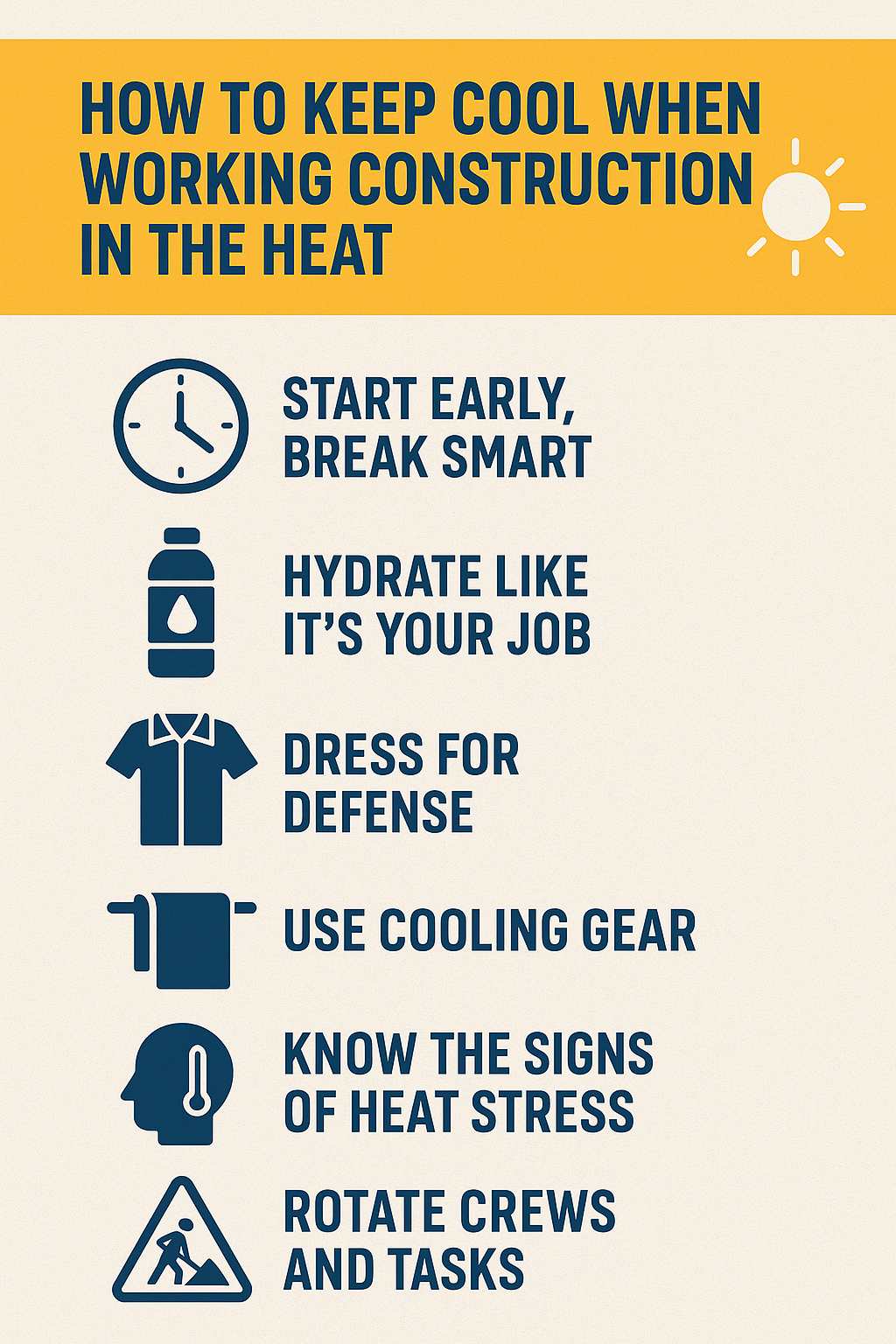The Dirt Desk - Q&A
How to Keep Cool When Working Construction in the Heat
When the temperatures climb and the sun won’t quit, working construction becomes more than just tough—it becomes dangerous. Every summer, job sites across North America face the same challenge: how to keep crews cool, safe, and productive in extreme heat.
Whether you’re running a skid steer or swinging a hammer, here are practical, field-tested ways to beat the heat on site:
Start Early, Break Smart
Heat peaks between 12–4 p.m. Whenever possible, shift your heaviest work to earlier in the day. That concrete pour, trenching, or heavy lift? Do it while it’s still reasonable out. And take regular breaks in the shade—even five minutes off the line makes a big difference.
Hydrate Like It's Your Job
If you're thirsty, you're already behind. Drink water constantly, not just at breaks. Electrolyte drinks (without tons of sugar) can help replace what you’re sweating out. And don’t forget: coffee and energy drinks don’t count—they dehydrate you.
Pro tip: Keep a cooler on site with cold water, fruit, and salty snacks. Your body will thank you.
Dress for Defense
Long sleeves may seem counterintuitive, but lightweight, light-colored, breathable fabrics protect your skin and actually keep you cooler. Look for moisture-wicking gear and wear a wide-brimmed or neck-covering hat to shield your face and neck.
Use Cooling Gear
Cooling towels, vests, and bandanas aren’t just gimmicks—they work. Soak them in cold water and drape them around your neck or under your hard hat. There are even battery-powered cooling vests and hard hat fans that are gaining traction on hot sites.
Know the Signs of Heat Stress
Train yourself—and your crew—to spot heat exhaustion early:
- Dizziness
- Headache
- Muscle cramps
- Nausea
- Confusion or slurred speech
If you or a teammate show symptoms, stop work immediately, get in the shade, hydrate, and cool the body with wet towels or fans. Heat stroke is serious—and can be fatal if ignored.
Rotate Crews and Tasks
If you’re managing a site, be proactive: rotate crews out of direct sun, mix heavy and light tasks throughout the day, and make sure everyone has access to water and shaded rest areas. Sometimes, protecting your team means dialing back the pace to preserve long-term performance.
Working in the heat is part of the job—but it shouldn’t be a health risk. With smart planning, the right gear, and a focus on hydration and rest, you can keep cool and stay productive, even when the thermometer’s pushing triple digits.

